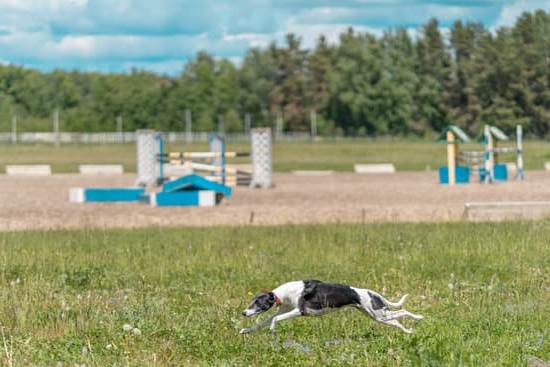How to train a dog to sniff out explosives is a critical skill that can save lives and improve security measures. Explosive detection dogs play a crucial role in identifying potential threats and ensuring the safety of individuals in various environments. In this article, we will explore the key elements of training a dog for explosive detection, from understanding their role to advanced training techniques, and real-life success stories.
Explosive detection dogs are highly trained canines that have been taught to use their sense of smell to identify explosives and notify their handlers. These dogs are instrumental in various settings, including airports, public events, military operations, and law enforcement activities. With the growing threat of terrorism and other violent acts involving explosives, the demand for well-trained explosive detection dogs has significantly increased.
In this section, we will delve into the significance of explosive detection dogs and how their unique abilities contribute to security efforts across different sectors. From understanding the behavioral traits that make certain breeds suitable for detection work to recognizing the impact of these skilled animals on public safety, we will provide a comprehensive overview of why explosive detection dogs are essential assets in today’s society.
The Role of Scent Training in Explosive Detection
Scent training plays a crucial role in the effectiveness of explosive detection dogs. These specially trained canines are able to detect minute quantities of explosives, making them essential assets in security and law enforcement operations. The key to their success lies in their ability to recognize and alert their handlers to the presence of explosive materials, even in challenging environments.
Dogs have an extraordinary sense of smell that is far more advanced than that of humans. This ability, combined with their trainability, makes them ideal candidates for scent detection work. In explosive detection training, dogs are taught to identify and differentiate various scents associated with different types of explosives. Through positive reinforcement and repetitive training exercises, they learn to indicate the presence of these scents by signaling to their handlers.
Scent training not only enables dogs to detect explosives in wide-ranging environments such as airports, public venues, and transportation hubs but also provides a non-invasive method for security personnel to locate potential threats. The use of well-trained explosive detection dogs has proven to be an effective means of preventing security incidents and safeguarding public safety.
Choosing the Right Dog for Explosive Detection Training
When it comes to explosive detection training, choosing the right dog is crucial for the success of the program. Not all dogs are suitable for this type of work, so it’s important to carefully consider certain factors before selecting a dog for explosive detection training.
Breed Selection
Certain breeds are known to excel in scent detection work, making them ideal candidates for explosive detection training. Breeds such as German Shepherds, Belgian Malinois, Labrador Retrievers, and Springer Spaniels are commonly chosen for this type of work due to their strong sense of smell, intelligence, and trainability. These breeds have a natural desire to work and are often used in various law enforcement and military roles.
Temperament and Drives
In addition to breed selection, it’s important to assess the individual dog’s temperament and drives. Dogs selected for explosive detection training should exhibit qualities such as confidence, focus, resilience, and an eagerness to work. They should also have a strong play drive or food drive, as these drives can be utilized during training sessions as positive reinforcement.
Health and Physical Fitness
Explosive detection dogs need to be in optimal health and physical condition in order to perform their duties effectively. It’s essential to select dogs that are free from any major health issues that could impede their ability to work. Additionally, the selected dogs should undergo regular veterinary check-ups and maintain a healthy diet and exercise regimen to ensure they remain fit for duty throughout their career as explosive detection dogs.
Basic Obedience Training for Explosive Detection Dogs
Obedience training is a crucial foundation for the successful training of explosive detection dogs. These dogs must be well-behaved and responsive to their handlers in various environments. Basic obedience training includes teaching the dog to follow commands such as sit, stay, come, and heel. This ensures that the dog can work effectively alongside their handler without being distracted or causing disruptions.
One key aspect of basic obedience training is socialization. Explosive detection dogs need to be comfortable and confident in different settings and around various people. Socialization helps them become more adaptable and reduces the likelihood of them becoming fearful or aggressive when encountering new situations.
Consistency is also essential in basic obedience training. Handlers should use positive reinforcement techniques such as rewards and praise to encourage good behavior in the dogs. Consistent training helps the dog understand what is expected of them and reinforces their obedience over time.
| Aspect of Training | Description |
|---|---|
| Socialization | Exposing the dog to different environments, people, and animals to build confidence. |
| Consistency | Using positive reinforcement and clear, consistent commands to reinforce good behavior. |
Introduction to Scent Detection Training
Explosive detection dogs play a crucial role in maintaining security and safety in various environments, from airports to public events. One of the key aspects of training these specialized canines is scent detection training. This type of training is essential for enabling dogs to identify and locate explosives, making them invaluable assets in preventing potential threats.
The Science Behind Scent Detection
Dogs have an incredibly keen sense of smell, with some breeds having up to 300 million olfactory receptors in their noses compared to about 5-6 million in humans. This remarkable sense of smell allows dogs to detect even the faintest odors, including those given off by explosives. The process of scent detection involves teaching dogs to recognize specific explosive odors and indicate their presence by barking, sitting, or using some other trained response.
The Importance of Proper Training
Proper scent detection training is vital in developing a dog’s ability to distinguish between different scents and accurately identify the presence of explosives. This type of training not only enhances the natural olfactory abilities of a dog but also ensures that they remain focused and disciplined during search operations. Without effective scent detection training, dogs may struggle to differentiate between different odors or become easily distracted, compromising their effectiveness as explosive detection assets.
Step-by-Step Guide on How to Train a Dog to Sniff Out Explosives
Explosive detection dogs play a crucial role in maintaining security and safety in various settings, including airports, government buildings, and public events. These highly trained canines are capable of detecting explosive materials through their exceptional sense of smell, making them valuable assets in preventing potential threats. In this section, we will provide a step-by-step guide on how to train a dog to sniff out explosives.
Firstly, it is essential to select a dog with the right characteristics for explosive detection training. Breeds such as German Shepherds, Labrador Retrievers, and Belgian Malinois are commonly chosen for this purpose due to their intelligence, physical endurance, and strong sense of smell. Once a suitable candidate is identified, the dog undergoes basic obedience training to ensure that it can follow commands reliably. This includes learning essential cues such as sit, stay, and come when called.
The next phase involves introducing the dog to scent detection training specifically geared towards explosives. This typically begins with imprinting the canine with the target odor through positive reinforcement techniques.
As the dog becomes familiar with the scent, training progresses to include discrimination exercises where it learns to differentiate between various scents while consistently identifying explosives. The final stage of training involves scenario-based simulations that prepare the dog for real-life situations where it may need to locate explosives in different environments.
| Explosive Detection Dog Training | Key Points |
|---|---|
| Dog Selection | Choose breeds like German Shepherds or Labrador Retrievers |
| Obedience Training | Teach basic commands such as sit, stay, and come when called |
| Scent Detection Training | Imprint the dog with target odor and progress to discrimination exercises |
Advanced Training Techniques for Explosive Detection Dogs
Once the basic obedience and scent detection training have been established, it is crucial to move on to more advanced training techniques for explosive detection dogs. This will further hone their skills and ensure that they are able to perform at the highest level when it comes to detecting explosives in real-world situations. Here are some advanced training techniques to consider:
- Simulated Field Exercises: Set up realistic scenarios where the dog has to search for hidden explosives in different environments such as buildings, vehicles, or outdoor locations. This will help the dog adapt to various settings and become comfortable working in any situation.
- Distraction Training: Introduce distractions during training sessions to mimic the chaos of a real-world environment. This could include loud noises, unfamiliar objects, or other animals. The dog must be able to remain focused on its task despite these distractions.
- Variable Rewards: Implement a variable reward system where the dog is not rewarded every time it successfully detects explosives during training. This will prevent the dog from becoming solely motivated by treats and ensure that it continues to perform at its best even without a guaranteed reward.
These advanced training techniques will push explosive detection dogs to refine their skills and become more reliable in detecting explosives in high-pressure situations.
Additionally, ongoing exposure to new scents and substances should be incorporated into their training regimen as well as regular evaluations of their performance. By continually challenging and refining their abilities, explosive detection dogs can maintain their effectiveness in protecting public safety and security. By implementing these advanced training techniques, handlers can ensure that explosive detection dogs are always prepared for any situation they may encounter in the field.
The Importance of Maintenance Training for Explosive Detection Dogs
Maintenance training plays a crucial role in ensuring the continued effectiveness of explosive detection dogs. Even after initial training, dogs require regular practice to maintain their scent detection skills at a high level. This ongoing training helps to reinforce their ability to identify explosives and ensures that they remain reliable assets in security and law enforcement operations. Here are some key reasons why maintenance training is essential for explosive detection dogs:
- Consistency: Regular training sessions help dogs to stay consistent in their ability to identify explosives, reducing the risk of false negatives or false positives during real-life situations.
- Refinement: Maintenance training allows handlers to focus on refining the dog’s detection skills, fine-tuning their ability to pick up specific scents and recognize varying levels of threat.
- Adaptability: By regularly exposing dogs to different environments, scenarios, and types of explosives during maintenance training, they become more adaptable and versatile in their detection capabilities.
In addition to the practical benefits of maintenance training, it also serves as an opportunity for handlers and dogs to strengthen their bond and communication. These sessions provide valuable time for handlers to observe their canine partners’ performance closely, address any issues that may arise, and provide positive reinforcement for accurate detections.
Ultimately, maintenance training ensures that explosive detection dogs remain sharp, focused, and highly skilled in their crucial role of protecting public safety. Without ongoing practice and reinforcement, the effectiveness of these valuable K9 units could diminish over time. Therefore, investing in regular maintenance training is an essential aspect of maximizing the impact of well-trained explosive detection dogs on security efforts.
Real-Life Examples of Explosive Detection Dog Success Stories
There are numerous real-life examples of explosive detection dog success stories that highlight the crucial role these canine heroes play in maintaining security. One notable example is the story of a sniffer dog named Lucca, a retired US Marine Corps working dog who served in over 400 missions and successfully sniffed out countless explosives during her service in Iraq and Afghanistan.
Lucca’s exceptional skills led to the detection and prevention of potential threats, ultimately saving the lives of many military personnel and civilians.
Another inspiring success story is that of a Belgian Malinois named Cairo, who played a pivotal role in the operation that resulted in the death of Osama Bin Laden. Cairo’s remarkable ability to detect explosives contributed significantly to the success of this high-profile mission. These real-life examples underscore the indispensable role of explosive detection dogs in safeguarding public safety and preventing potentially catastrophic events.
These heartwarming stories not only demonstrate the extraordinary capabilities of explosive detection dogs but also serve as a testament to their unwavering loyalty and dedication to their handlers. These courageous and highly trained canines continue to make invaluable contributions to security efforts around the world, showcasing the significant impact they have on safeguarding communities from potential threats.
Conclusion
In conclusion, the training of explosive detection dogs is a crucial aspect of maintaining security in various environments. These highly trained animals play a vital role in safeguarding public spaces, transportation systems, and private facilities from the threat of explosives. Their ability to detect even minute traces of explosives can prevent potentially devastating incidents, making them an invaluable asset in security measures.
By understanding the importance of scent training and selecting the right dogs for this specialized work, handlers can ensure that their canine partners are well-prepared for the demands of explosive detection. Additionally, ongoing maintenance training and advanced techniques help to keep these dogs sharp and effective in their duties. Real-life examples of success stories illustrate just how impactful well-trained explosive detection dogs can be in keeping people safe.
The impact of well-trained explosive detection dogs on security cannot be overstated. As threats continue to evolve, these highly skilled animals offer a reliable means of detecting explosives that may not be easily identifiable through other methods. By investing in their training and utilizing their abilities effectively, security teams can significantly enhance their overall safety protocols and provide peace of mind for those they serve.
Frequently Asked Questions
Can Dogs Be Trained to Smell Explosives?
Dogs can absolutely be trained to smell explosives. Their incredible sense of smell, which is far superior to that of humans, makes them ideal for this type of work. Through proper training and reinforcement, dogs can effectively detect various types of explosives in different environments.
What Breed of Dog Is Used for Explosive Sniffing?
Various breeds of dogs can be used for explosive sniffing, but some of the most common ones include German Shepherds, Belgian Malinois, Labrador Retrievers, and Springer Spaniels. These breeds are often chosen for their intelligence, trainability, and strong sense of smell, all of which are essential traits for explosive detection work.
How Long Does It Take to Train an Explosive Detection Dog?
The length of time it takes to train an explosive detection dog can vary depending on factors such as the dog’s breed, age, and previous training experience. However, on average, it typically takes around 6-8 months to fully train a dog for explosive detection work.
This includes teaching the dog how to recognize and signal the presence of explosives, as well as working in various environments and situations. Consistent training and practice are essential for maintaining the dog’s skills over time.

Welcome to the blog! I am a professional dog trainer and have been working with dogs for many years. In this blog, I will be discussing various topics related to dog training, including tips, tricks, and advice. I hope you find this information helpful and informative. Thanks for reading!





